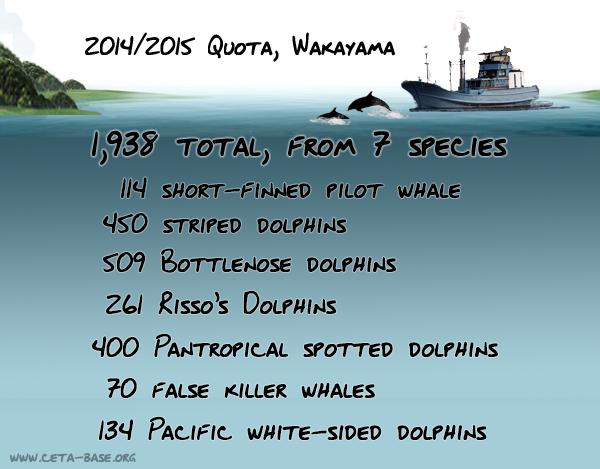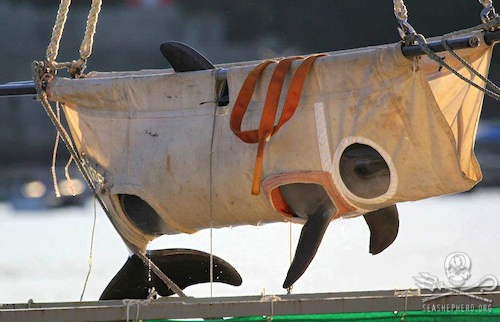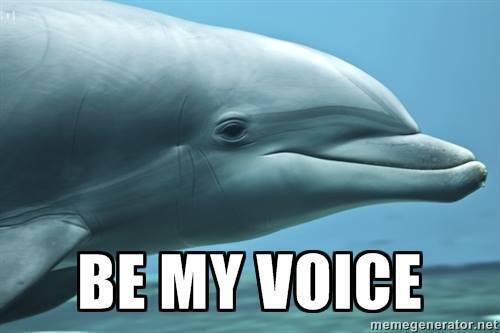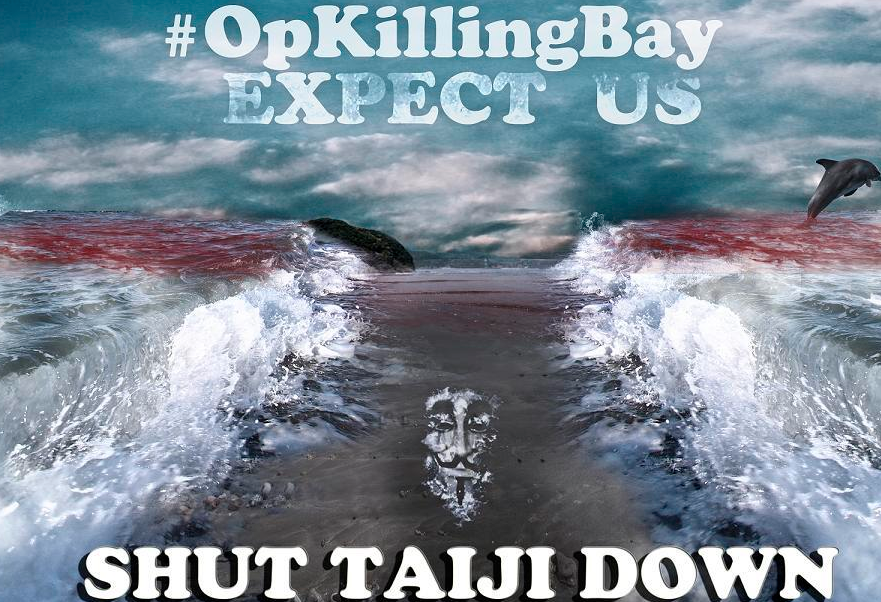Depending on who you ask, you will get one of two answers. You will either here it is all about making money by selling dolphins into captivity or their meat to facilities, or you will hear that it is an honored tradition dating back hundreds of years. To give you an idea which side to choose, first consider this. The Taiji dolphin slaughter as it is now started in the 1970s, Given the history of the world, odds are that the killing of dolphins in Taiji probably did happen earlier, but it was in the 1970s that things really picked up right alongside the growing popularity of dolphin parks around the world. Another thing to quickly consider is that thing called tradition. I don't know about you, but to me tradition is doing something the same way it has always been done year after year after year. In the case of whaling (including small cetaceans such as a dolphin) tradition was being lucky enough to find a whale on a wooden ship and using spears and what not to kill the animal. Certainly it is not a humane way of doing things, but here is my point. Since when does tradition utilize motor boats, cellphones, radar, and scuba gear? Last time I looked Japan's "traditional" hunts never had the advantage of those technologies. So we can throw the "tradition" out the window on that. If they cut out the technology they are using and did it the way they did it hundreds of years ago, then they can call it a tradition. Moving on...
The number one thing that is driving this slaughter is money (big shock right). Live dolphins sell for an insane amount of money.

This one dolphin would sell for over $50,000 USD.

Last year, this baby bottlenose dolphin, Angel, was to sell for over 1 million dollars USD, but complications arose and the dolphin is now living at Taiji Whale Museum.
So you can see the sheer amount of money that a single dolphin can make. If the pod is in good shape, the majority of the pod can be sold into captivity for a simply incredible profit. The rest of the pod is brutally slaughtered. It seems that only when the world is watching via live stream does Japan set a portion of the pod free. The killing of the dolphins really has no purpose outside of an attempt at scrounging up a few more dollars. Dolphin meat is pretty cheap and does not sell for much. In fact, it is so unpopular that it is often sold as larger whale meat. We can find similar issues on the east coast of the United States where stingray is often labeled as scallops. So this kind of thing does intentionally happen.

Above you can see Taiji's quota for the year. Pretty big numbers they are after once again. The drive hunt itself is a massive scare tactic. The dolphins are extremely sensitive to sound and as a result, the fishermen bang on objects in the water to create a sort of sound wall that literally herds the dolphins towards Taiji. There, the dolphins are often times divided into a few groups. Next trainers from marine parks around the world pick out the dolphins they wish to purchase. While they are still present, the rest of the pod is brutally slaughtered bringing into question just how much these "trainers" and facilities actually care for the animals they claim to want to protect.
If you want to help these animals, you do have a voice while sadly, they do not. Take to social media, Twitter and Facebook are excellent options and tell others about this slaughter. At the end of this blog I will be putting up some photos from Taiji (WARNING: GRAPHIC IMAGES) to give you an idea as to just what we are dealing with here. Feel free to spread those pictures far and wide. You can also follow these groups....
https://www.facebook.com/SeaShepherdCoveGuardiansOfficialPage Sea Shepherd's Cove Guardians are on the ground in Taiji and bring the slaughter to the world via live streaming on their website. Check out the Facebook link above for more and follow them on Twitter here https://twitter.com/CoveGuardians
https://www.facebook.com/ricobarrysdolphinproject Ric O' Barry's Dolphin Project is also in Taiji and are documenting the slaughter as well. Follow them on Twitter at https://twitter.com/Dolphin_Project
The last group I recommend following is that of the Anonymous Collective. We are Operation Killing Bay and we are a collective of people just like you who have had more than enough of this slaughter. We stand against it, we hate it, and our hearts break each and every time we see those boats leave Taiji harbor in search of dolphins. We are dedicated to spreading the word about Taiji and bringing it back to major headlines. The time to fight against this slaughter is now. It takes nothing to join us. If you have a voice, use it. Tweet on Twitter using #OpKillingBay and visit https://sites.google.com/site/opkillingbay2014/ as we prepare for our next tweet storm on September 19th. Those are just a few of the things you can do to help out against the Taiji dolphin slaughter.
Thank you as always for reading!!! (WARNING: GRAPHIC IMAGES AHEAD)








Angel continues to live at the Taiji Whale Museum in what is described as a filthy and undersized tank. Her mother was brutally slaughtered.


